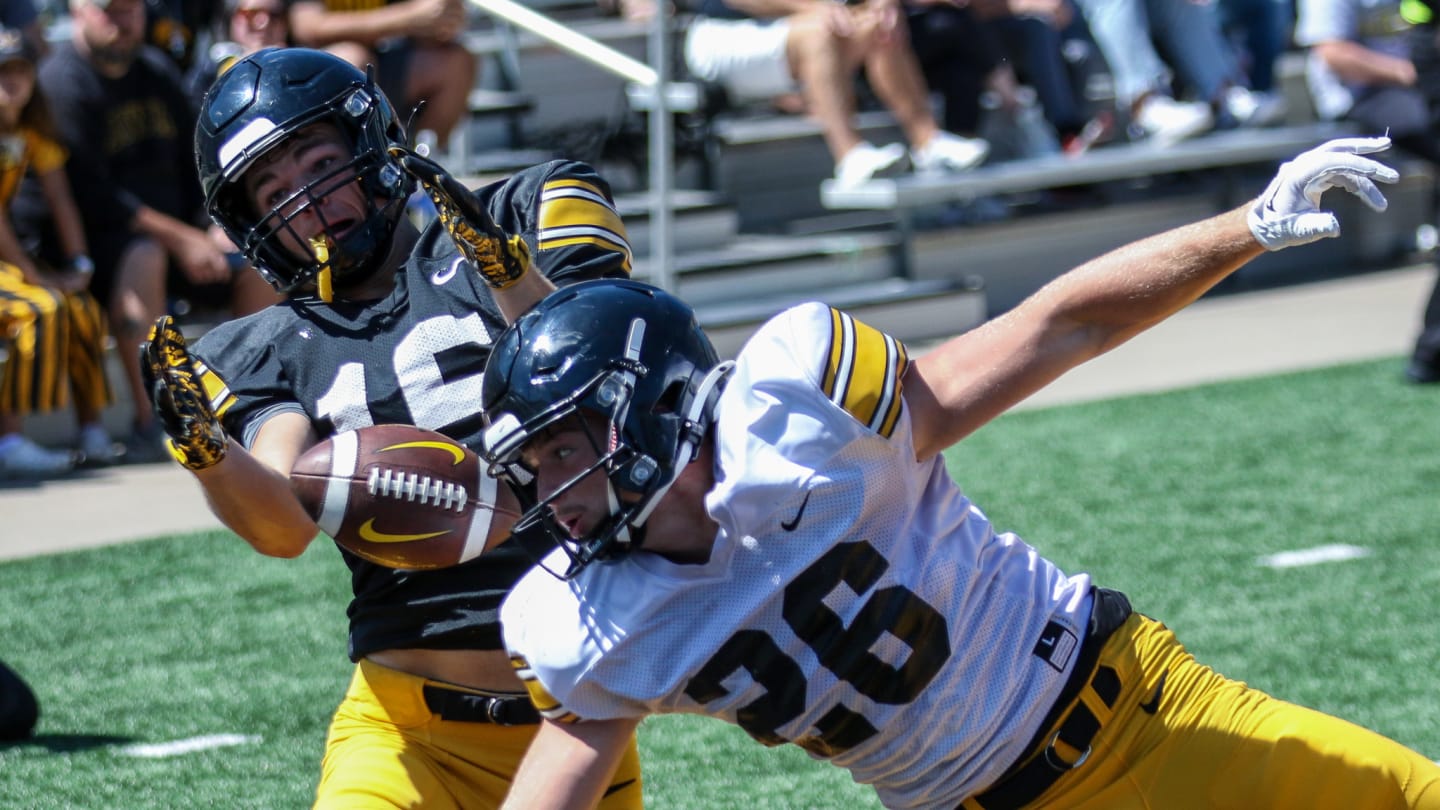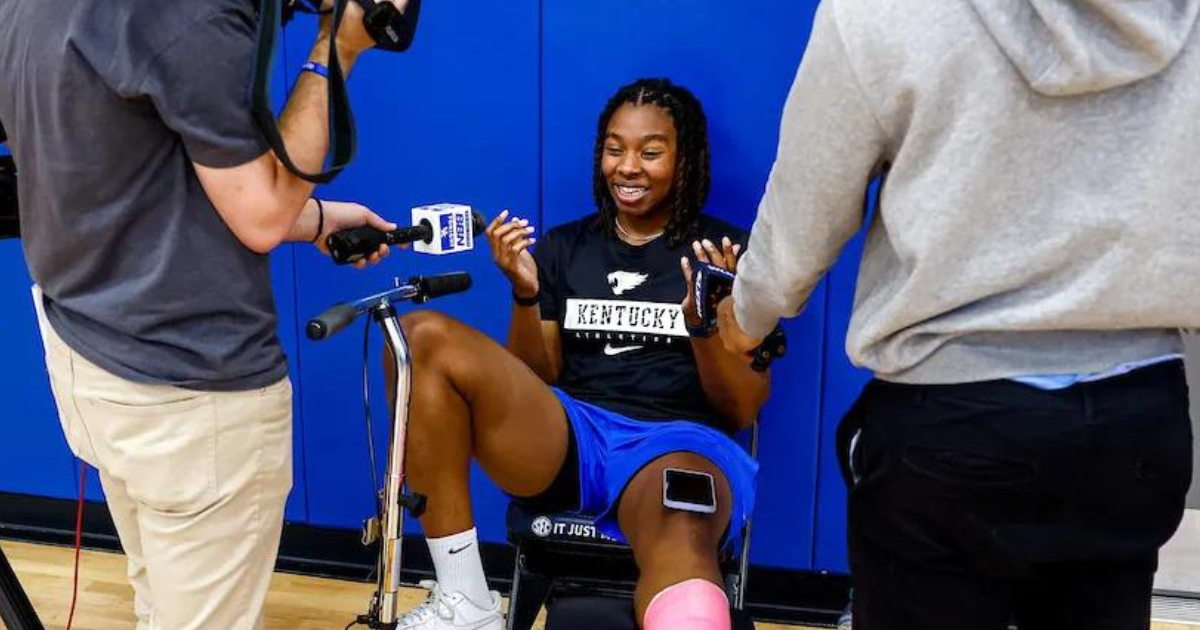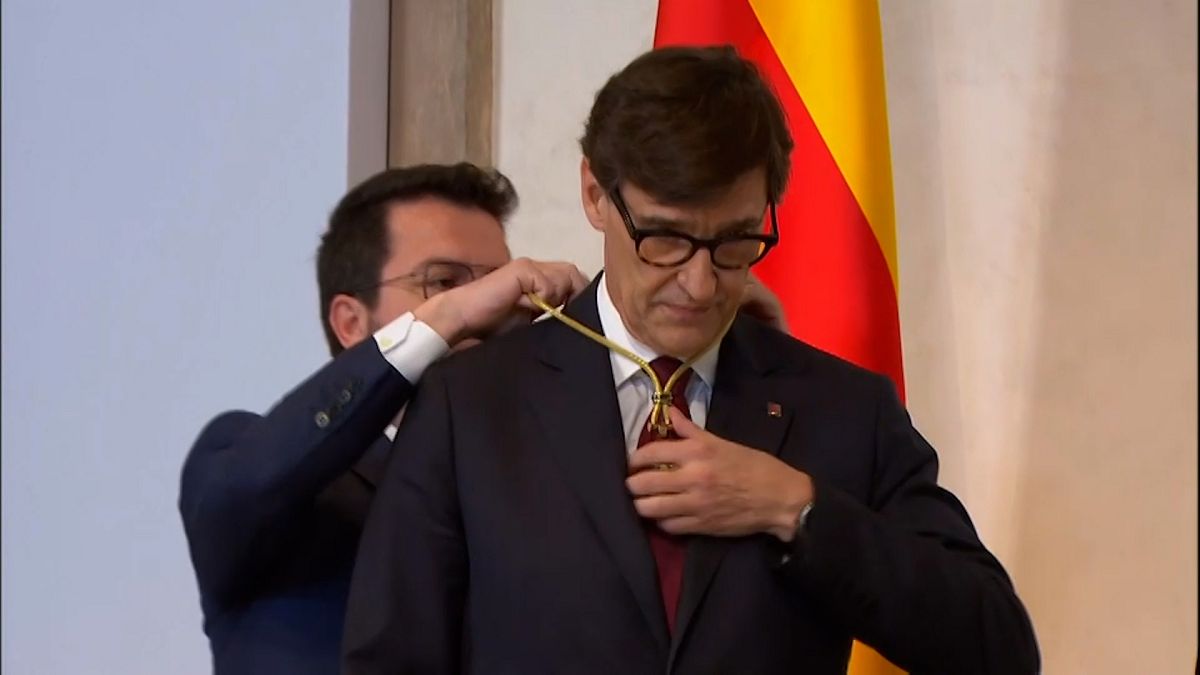Sports
L.A. Mayor Karen Bass touts a car-free Olympics, but plans still call for some cars
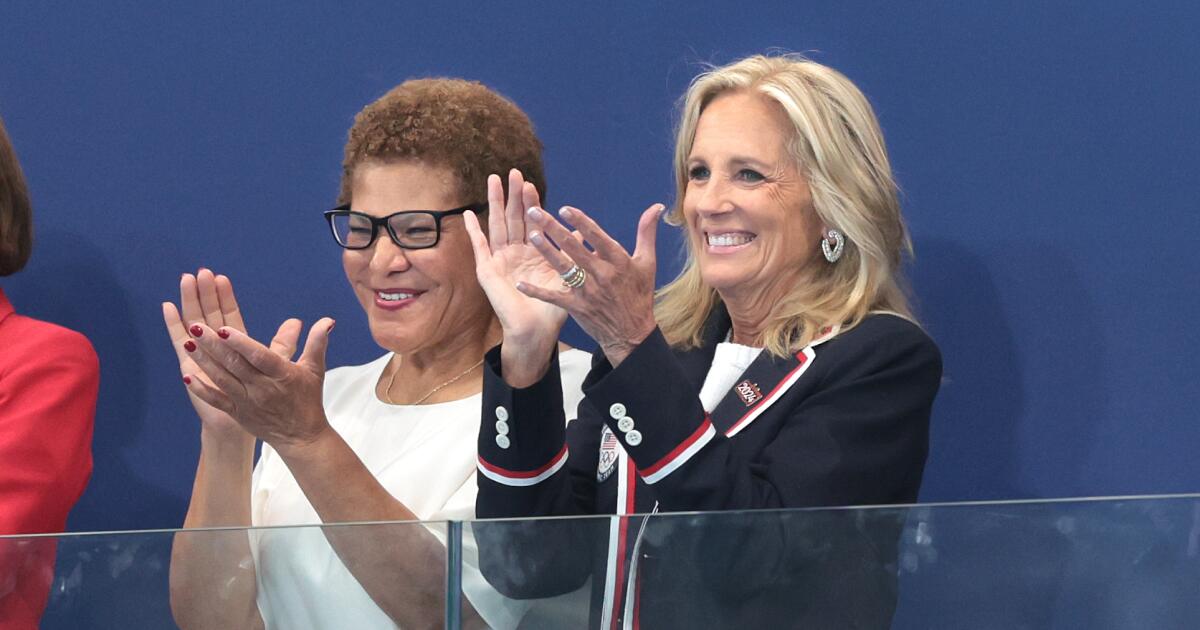
Rush hour all but disappeared. There was less traffic on the freeways and not as much stop-and-go on surface streets.
Longtime residents of Southern California remember that, in terms of driving, the 1984 Summer Olympics felt something like heaven. Businesses switched to staggered schedules. Lots of people left town for a few weeks.
2024 Paris Summer Olympic Games
Now, with the world’s biggest sports competition set to return in four years, Mayor Karen Bass wants to go a step further.
“A no-car Games,” she said.
Doubling down on something she discussed with The Times in April, Bass told reporters at the 2024 Paris Olympics that she envisions expanding public transportation to a point where fans can take trains and buses to dozens of sports venues, from Crypto.com Arena downtown to SoFi Stadium in Inglewood to the beaches of Santa Monica.
“That’s a feat in Los Angeles — we’ve always been in love with our cars,” she said at a news conference Saturday, adding that people “will have to take public transportation to get to all the venues.”
The LA28 organizing committee — a private group tasked with staging the Games — prefers to say it is planning a “public transit first” Games. Some venues will have ample parking, others will not. Organizers say no one will be told they cannot drive to a competition.
The Olympics are expected to draw a crush of visitors to the region in 2028. Bass, city staff and LA28 executives have made multiple trips to France, eager to see what officials here are doing well. Or not so well.
Paris is dealing with an influx of thousands of athletes, tens of thousands of coaches and officials and an estimated 15 million people expected to pass through during the Olympics and Paralympics, which end in early September.
The French capital has relied heavily on its established, efficient Metro system. Subway cars run every few minutes with bright pink signage informing passengers where to disembark for short walks to various stadiums and arenas.
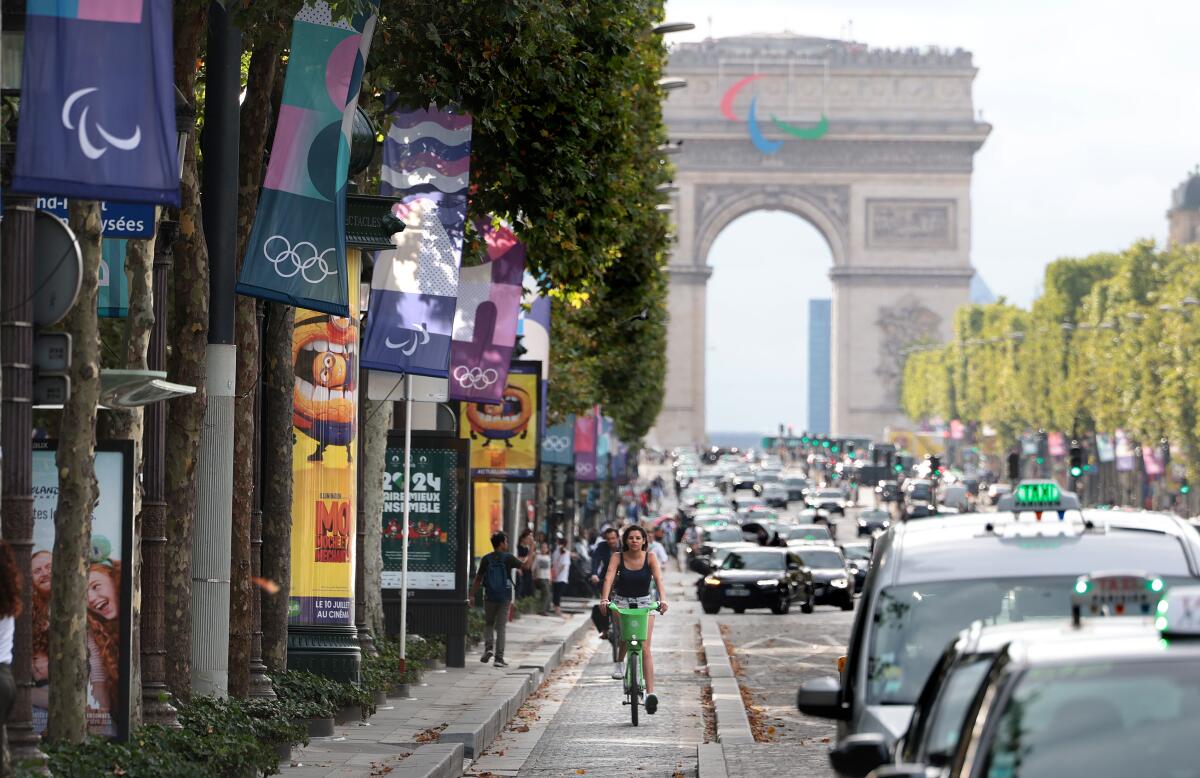
A woman rides along the Champ-Elysees before the Olympics in Paris on July 23.
(Wally Skalij/Los Angeles Times)
Still, Parisians have complained about heavy traffic, with drives that should take 20 minutes stretching well past an hour. Security measures have required multiple road closures.
For 2028, Bass plans to meet with major employers throughout Southern California to discuss the possibility of once again staggering work hours, a strategy former Mayor Tom Bradley used to great effect almost 40 years ago.
These are different times — replete with cellphones, laptops and Wi-Fi — so Bass also wants as many people as possible to work from home, much as they did during the pandemic lockdown.
Businesses “learned from COVID that we do have essential workers, people that must come to work,” she said. “There might be some employers that we would say: ‘Could you be remote for 17 days?’ ”
Southern California cannot hope to match Paris in terms of public transport. Not with the current state of its bus and rail system. Not with a vast geographical footprint that will see Olympic events held in Long Beach and Carson, the San Fernando Valley and Temecula.
LA28 has been considering a variety of strategies to avoid traffic jams and long waits for commuters.
SoFi, hosting the opening ceremony and swimming, will allow fans to park in its expansive lots. Same with Dodger Stadium and the Rose Bowl, which have not been named as venues but are expected to be added soon.
Other venues such as the Riviera Country Club for golf and the Coliseum for track and field will have little to no on-site parking.
Bass said more than 3,000 buses will be brought into L.A. from across the country to help with moving fans, linking venues to temporary satellite parking.
Planners have estimated the overall cost for this could surpass $1 billion. Sen. Alex Padilla (D-Calif.) announced last month that he has secured an initial $200 million in federal funding for the bus leasing program and more such help is expected.
Overall, LA28 has estimated that the Games will cost about $7 billion — a figure that is likely to rise during the next four years. Organizers have vowed to balance their budget through International Olympic Committee contributions, corporate sponsorships, ticket sales and other revenue sources.
Dealing with traffic in the summer of 2028 will require cooperation among cities and at every level of government, Bass said. On the day before the Olympics closing ceremony in Paris, she referenced 1984 in expressing confidence that L.A. can handle what lies ahead.
“Angelenos were terrified that we were going to have terrible, terrible traffic,” Bass said. “We were shocked that we didn’t.”

Sports
How Louis Rees-Zammit is tackling the transition from rugby to the NFL with the Chiefs

ST. JOSEPH, Mo. — Grinning last month, Louis Rees-Zammit shared just how much he wanted to experience his first full-contact hit as an NFL player. Rees-Zammit, the Welsh former rugby star who joined the Kansas City Chiefs in March, knew he was just a few days away from his first training camp practice in full pads.
“I can’t wait to see the difference,” Rees-Zammit said.
His true “welcome to the NFL” moment, when the intensity level surprised him, came the morning of July 28, which was the Chiefs’ third consecutive padded practice. Rees-Zammit’s one-on-one drill that day was one every running back in the NFL has had to endure: The blitzing linebacker or safety charging into the backfield, the lone assignment for the running back is to prevent the defender from reaching the quarterback.
Across from Rees-Zammit on the field was linebacker Cole Christiansen, who like Rees-Zammit is trying to earn one of the final spots on the Chiefs’ initial 53-man roster. With quarterback Patrick Mahomes holding the ball in the pocket, Christiansen attacked from the B gap. Upon impact, Rees-Zammit lost his leverage and found out just how badly he could lose a pass-blocking rep. Christiansen de-cleated Rees-Zammit.
“It’s very physical,” Rees-Zammit said after Wednesday’s practice. “I’ve had to learn to adapt and lower my body height. In rugby, that’s not too much of a big deal. The blows you take here are pretty big. To be honest with you, it’s a completely different sport.
“I’ve never had to pass protect before. It’s actually illegal in rugby. I have to try to pick it up as quickly as possible. I’m not going to be amazing to start with.”
#Chiefs Louis Rees-Zammit working on pass protection during Sunday’s training camp practice pic.twitter.com/BLjhyi0ZLC
— Aaron Ladd (@aaronladdtv) July 28, 2024
Reps like the one against Christiansen, were to be expected, though. No newcomer on the Chiefs’ 91-man roster is as new to the sport as Rees-Zammit, 23, who will play in the first organized football game of his life Saturday when the Chiefs face the Jacksonville Jaguars in a preseason opener.
For Rees-Zammit, Saturday’s game — and training camp, for that matter — is about showing the Chiefs how fast he can learn and improve with each new experience on a football field.
Just seconds after his most embarrassing moment in camp, Rees-Zammit stood up, wiped the sweat from his eyes and got back in his two-point stance. When the next one-on-one rep began — against Christiansen again — Rees-Zammit did a better job of withstanding his teammate’s strength, pushing him away from Mahomes.
“The transition’s been fantastic for him,” Chiefs running back Isiah Pacheco said of Rees-Zammit. “Being that player that is a (leader) in the (running backs) room, (I’m) putting in his ear, ‘Just keep working hard, keep finishing.’”
Free, daily NFL updates direct to your inbox.
Free, daily NFL updates direct to your inbox.
Sign Up
With just three exhibition games before Aug. 27, the NFL’s annual cutdown day, Rees-Zammit will attempt to accomplish with the Chiefs what he did in rugby: Excel faster than anyone expected.
At 18, he signed his first professional contract with Gloucester, becoming the club’s youngest-ever Premiership player. Rees-Zammit was an impact player as a rookie, too. Not only was he Gloucester’s youngest European try scorer in 2019, but he also scored 12 tries in 15 appearances, improving at a rapid pace that doesn’t happen often in professional rugby. His most undeniable trait as one of the emerging wingers in world rugby was his elite speed, which led to his nickname Rees-Lightning.
Fans gravitated to Rees-Zammit because of his confident playing style, his looks and his appetite to be an international celebrity at a young age.
In 2021, Rees-Zammit helped lead Wales, his home country, to win the Six Nations championship. He produced his greatest highlight during the event, too, a clutch, game-winning try that featured plenty of his skills — speed, hand-eye coordination and bold creativity. In the final minutes of a road match against Scotland, Rees-Zammit caught the ball on the perimeter of the field and knew he had just one defender to beat. A sprinting Rees-Zammit chipped the ball over the defender with his right foot and sprinted past him to catch the ball off the first bounce for the match-winning score.

GO DEEPER
Harrison Butker stands by controversial commencement speech: It came from ‘a place of love’
In 32 international appearances for Wales, he scored 14 tries.
A few months after the Six Nations tournament, Rees-Zammit received one of the greatest honors in the sport: He was named to the British & Irish Lions squad — featuring players from England, Wales, Scotland and Ireland. But during his offseason in 2022, he began his plans to switch sports, working in Atlanta with longtime performance coach Chip Smith, who has trained more than 3,000 professional athletes, in hopes of becoming a viable NFL player.
“I achieved everything I wanted to in rugby,” Rees-Zammit said in early May. “I’ve always wanted to live in America. This was the perfect time to try to make it in the NFL and live over here.”
The winner of the #GuinnessSixNations Try Of The Championship is… 🥁 Louis Rees-Zammit! 👏 pic.twitter.com/yUR12z8lwE
— Guinness Men’s Six Nations (@SixNationsRugby) April 5, 2021
Rees-Zammit’s move to the NFL was the biggest coup for the league’s International Player Pathway — which recruits athletes from around the world in hopes of increasing the league’s ranks of international players — since the program’s launch in 2017. Rees-Zammit ran the 40-yard dash in 4.43 seconds at his pro day in March in front of scouts from 31 NFL teams.
He signed a three-year, $2.83 million contract with the Chiefs because he wanted to join a Super Bowl contender and felt coach Andy Reid could best use his skills in a versatile role as a running back. General manager Brett Veach said the Chiefs are committed to giving Rees-Zammit plenty of time to showcase his capabilities in the NFL. Even if Rees-Zammit struggles in the preseason, much of his rookie season could be spent further developing his skills on the practice squad.
“We know he’s got incredible top-end speed,” linebacker Drue Tranquill said of Rees-Zammit. “He’s got to learn in pass pro, how to sit down and how to take on blocks. He’s got to learn the in and outs of the game, but he’s a great athlete and that’ll come with time.”

GO DEEPER
Sizing up the Chiefs’ cornerback competition — the lone position battle in camp
Since joining the Chiefs, Rees-Zammit has gained the admiration of his teammates through his enthusiasm to learn as much as he can about the sport, the business of the NFL and how he can best use his skills at running back.
“Anything I can take from any of these boys that have been playing the sport for a long time is amazing,” Rees-Zammit said. “Isiah has been helping me out massively.”
Pacheco often teaches Rees-Zammit techniques during individual periods in practice. In a video released by the Chiefs, Pacheco offered pass-blocking advice to Rees-Zammit, sharing the same lessons he learned as a rookie two years ago from Jerick McKinnon.
“We can both help each other out”
Chiefs starting RB Isiah Pacheco coaching up Louis Rees-Zammit is so awesome to see (via @Chiefs) pic.twitter.com/1oMMX08jVr
— NFL UK & Ireland (@NFLUKIRE) July 31, 2024
The 6-foot-2 Rees-Zammit gained 16 pounds in the summer, reporting to camp at 209 pounds, to help him be better prepared to endure the league’s physicality. He hasn’t missed a practice, showing durability and strong conditioning despite training in hotter temperatures than he was accustomed to. Certain details have been refined, too, such as being consistent with his pre-snap stance and body language when he lines up so he doesn’t tip off the defense about the upcoming play.
“The biggest difference is just mental,” he said. “I’m nonstop trying to learn this playbook because as soon as I can play fast, that’s the biggest thing. We don’t finish meetings until 8 (p.m.), so I spend an extra two hours (after) just learning the plays because I’m playing catchup. There’s no time to rest for me. I’ve got to give this my all because ultimately this is my dream.
“The first goal is to make the team. I know special teams are going to be massive for me.”

GO DEEPER
Chiefs’ Clyde Edwards-Helaire hopes to help others by sharing his experience with PTSD
The best and most direct way for Rees-Zammit to earn a roster spot is by excelling as a kickoff returner. At the end of most of practices, special teams coordinator Dave Toub has had Rees-Zammit and receiver Nikko Remigio as the Chiefs’ top two kickoff returners.
“We always tell the guys that three or four guys make the team because of their special teams play,” Reid said of Rees-Zammit and Remigio. “Those two would probably fit into that category, but they’ve still got to do well at their position. For them to make the team, they’ve got to help out in that area.”
Toub believes Rees-Zammit could be the perfect player to fit the NFL’s new kickoff rules.
Louis Rees-Zammit returns a kickoff 👀 pic.twitter.com/VYiD7qrOMW
— KC Sports Network (@KCSportsNetwork) July 31, 2024
The NFL modified its kickoff to return the play to relevance. Last season, the kickoff had a return rate of just 21.8 percent, the lowest in the league’s 104-year history. No kickoff was returned in Super Bowl LVIII. League officials want the return rate this season to increase to at least 30 percent.
The Chiefs hope Rees-Zammit can make an impact on kickoff returns in the preseason by blending the ball-carrying skills he perfected in rugby with the improving vision, acceleration and elusiveness he has shown in camp when he has the ball in the open field.
“We’re trying to get him all the work we can to bring him up to speed,” Toub said of Rees-Zammit. “He’s been great. He’s doing a good job as a returner.”

GO DEEPER
What Chiefs receiver Nikko Remigio is doing to get noticed and make the roster
Rees-Zammit didn’t join the Chiefs simply to be known as a kickoff returner.
He wants the ball in his hands as much as possible, proving to the Chiefs that he can be a competent running back. He also wants to be successful for Joseph Zammit, his father who introduced him to the NFL. Growing up in Penarth, Wales, Rees-Zammit watched many NFL games alongside his father, who became so passionate about American football that he played in the British American Football Association in 1987 for the Cardiff Tigers as a receiver and running back.
“I’ve told him about training camp, how tough it’s been,” Rees-Zammit said of his father. “He’s been giving me some tips and tricks on pass protection — getting in close, shooting my hands and dropping my height.”
Stackin’ those reps ⚡️ @LouisReesZammit pic.twitter.com/dK3IeHbwfh
— Kansas City Chiefs (@Chiefs) July 28, 2024
Rees-Zammit has earned some small victories in camp. The Chiefs’ first padded practice was rough for Rees-Zammit, who was hit and tackled behind the line of scrimmage over and over again. The next day, he missed a wide-open running lane, instead running into the back of tight end Irv Smith Jr. But the next day, he showed better vision and patience on a stretch play by sprinting through the correct lane, the rep ending with no defender touching him.
Last week, Rees-Zammit’s most impressive rep was as a receiver in a one-on-one drill against linebacker Leo Chenal. Rees-Zammit flashed his speed on a fade route near the sideline, as he sprinted by Chenal, tracked the deep pass and caught the ball 30 yards downfield. And Rees-Zammit even won a one-on-one battle in pass protection against rookie linebacker Swayze Bozeman, the rep ending with Pacheco shouting in celebration.
“I’m incredibly proud of myself and the journey I’ve been on,” Rees-Zammit said.
One of the best parts of Saturday’s game for Rees-Zammit is that his parents, Joseph and Maxine, will be in the stands at EverBank Stadium to watch him perform.
“Oh, he’s just as excited as I am,” Rees-Zammit said of his father. “It’s going to be amazing, a dream come true to be able to put the uniform on and embrace the moment. I’m going to go out there and focus on my job fully and go for it.”
(Photo: Denny Medley / USA Today)
Sports
Carl Lewis pushes for drastic changes after US men's disastrous 4×100 relay: 'Time to blow up the system'
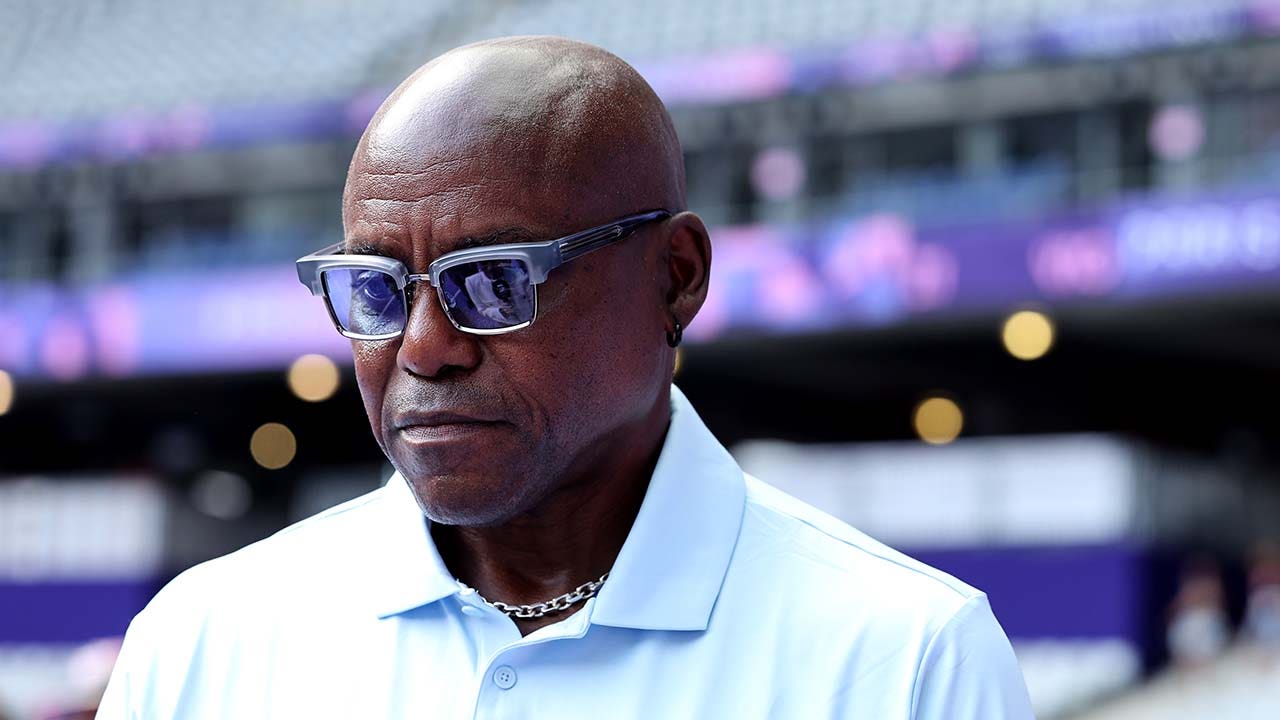
American track star Noah Lyles missed the 4×100-meter relay due to COVID-19. While Team USA may have benefited from Lyles’ presence on the track for the relay event, a mishap ultimately ended the American men’s hopes of capturing gold in Paris Friday.
The U.S. men’s track and field team extended its medal drought in the men’s event to 20 years after a botched handoff in the first leg of the race led to a disqualification for the Americans.
The team of Christian Coleman, Kenneth Bednarek, Kyree King and Fred Kerley finished the race in seventh place but was later disqualified after it was found Coleman handed off the baton to two-time silver medalist Bednarek outside the exchange zone.
Carl Lewis, a former American track and field athlete, during a tour of the Stade de France on day six of the Olympic Games Paris 2024 Aug. 1, 2024, in Paris. (Arturo Holmes/Getty Images)
Legendary track and field athlete and nine-time Olympic gold medalist Carl Lewis has been in Paris to watch the 2024 Summer Games. He described Team USA’s performance on Friday as a “total embarrassment,” while also calling for some serious changes to U.S. track and field.
“It is time to blow up the system,” Lewis posted on X, formerly Twitter. “This continues to be completely unacceptable. It is clear that EVERYONE at [USA Track & Field] is more concerned with relationships than winning. No athlete should step on the track and run another relay until this program is changed from top to bottom.”
TEAM USA WINS GOLD IN MEN’S 4X400-METER RELAY AT PARIS OLYMPICS
Canada claimed the gold medal after finishing the race in 37.50 seconds, while South Africa earned silver. Great Britain won the bronze.
All of Team USA, except for Bednarek, spoke to reporters after the race. Coleman attributed the error to the team being caught up in the heat of the moment.

Christian Coleman, right, of the United States, struggles to hand the baton to teammate Kenneth Bednarek in the men’s 4×100-meter relay final at the 2024 Summer Olympics Friday, Aug. 9, 2024, in Saint-Denis, France. (AP Photo/Bernat Armangue)
“We practiced a lot,” Coleman said. “Me and Kenny have been competitors but also teammates a few times. We felt really confident going out there. In the heat of the moment, it just didn’t happen.”
After being pressed to pinpoint what exactly caused the mishap, Coleman said, “I’m not sure if you want me to point fingers or something like that. As a team, as a unit, we didn’t get it done today.”
Coleman’s teammate, Kerley, seemed to take issue with the line of questioning and eventually interjected, “Y’all say the same s— over and over.”
The 2024 Summer Games are not the first at which the U.S. men’s team has had baton passing issues.
At the 2008 Olympics in Beijing, the Americans appeared to be on track to secure a spot in the 4×100 final until a mix-up led to the baton tumbling to the track as rain fell from the sky.
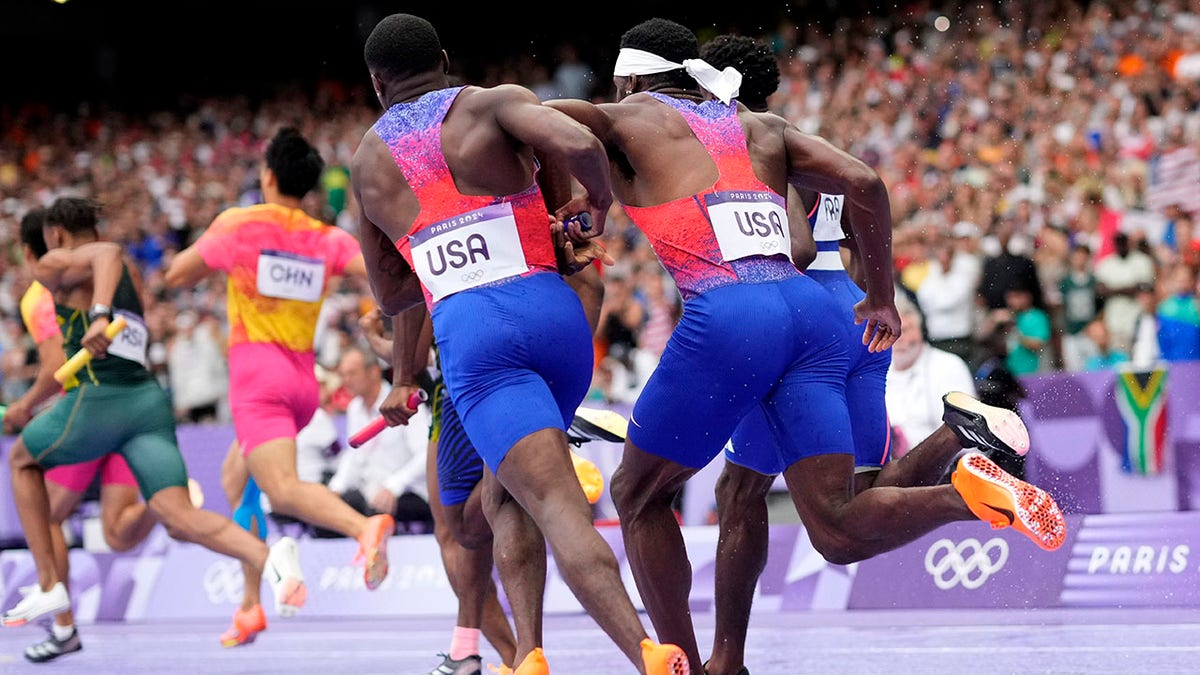
Christian Coleman, left, of the United States, struggles to hand the baton to teammate Kenneth Bednarek, in the men’s 4×100-meter relay final at the 2024 Summer Olympics Friday, Aug. 9, 2024, in Saint-Denis, France. (AP Photo/Bernat Armangue)
The Americans finished in second during the 2012 Games in London but were later stripped of the silver due to a doping case.
Although three Americans are among the top 11 100-meter sprinters in the world this year, the U.S. still could not manage to claim one of the three spots on the Olympic podium in Paris following the 4×100-meter relay.
However, the women provided a bright spot for the Americans as Sha’Carri Richardson anchored the 4×100-meter relay and helped lift Team USA to gold. The U.S. women have now earned 12 gold medals in the event.
Fox News’ Paulina Dedaj contributed to this report.
Follow Fox News Digital’s sports coverage on X, and subscribe to the Fox News Sports Huddle newsletter.
Sports
Richardson, U.S. women win gold in 4×100 relay

SAINT-DENIS, France — Sha’Carri Richardson took the baton and ran like the track owed her a gold medal.
As the anchor of the women’s 4×100 relay, she didn’t have to worry about getting out of the blocks quickly enough. With the eliteness of the American sprinters — Melissa Jefferson handing to Twanisha Terry, handing to Gabby Thomas — you wouldn’t think she’d need to come from behind.
But on this wet Friday night at Stade de France, Richardson had a little work to do.
Run, Sha’Carri. Run.
“I just remember trusting my third leg, trusting Gabby, knowing that she’s going to put that stick in my hand no matter what,” Richardson said.
She was in fourth with 90 meters to go when she had sole possession of the baton. She surged past France instantly. At the 60-meter mark, she’d pulled even with Germany. With 20 meters to go, she knew she was home.
“Handing off to Sha’Carri is obviously incredible,” Thomas, who also won gold in the 200 meters, said. “You know she’s going to get the job done no matter where we are in the race. There is nothing like watching her run down the track and win the race for us.”
Richardson secured her first Olympic gold medal with a 10.09-second anchor leg. After taking silver in Tokyo, the U.S. finished in 41.78 seconds to reclaim the women’s 4×100 relay crown. America has now won three of the last four Olympic one-lap relays.
HERE COMES SHA’CARRI RICHARDSON!
Team USA takes GOLD in the women’s 4x100m. #ParisOlympics
📺 NBC & Peacock pic.twitter.com/ZM6qaYCQOw
— NBC Olympics & Paralympics (@NBCOlympics) August 9, 2024
This was America’s third consecutive major international championship, including the 2022 and 2023 world championship victories. It punctuated the United States’ dominant display in women’s sprints.
In Paris, the U.S. women have won gold and bronze in the 200 meters, silver and bronze in the 100 meters, gold and silver in the 400-meter hurdles, and now gold in the relay. America still has three athletes in the 100-meter hurdles: Masai Russell, Alaysha Johnson and Grace Stark.
The women’s 4×100 relay is usually a massive rivalry with the Jamaicans. But their best sprinters were unavailable. Elaine Thompson-Herah announced in June an injury would keep her out of the Olympics. Shericka Jackson and Shelly-Ann Fraser-Pryce were both late withdrawals after arriving in Paris.
But as Saint Lucia’s Julien Alfred proved in the 100 meters — stunning Richardson in her Olympic final debut — the global field of sprinters is too formidable to sleep on. The Americans didn’t sleep.
Jefferson, who led off in the 2022 World Championships, didn’t get the start she wanted. But her time of 11.46 seconds was the third fastest of the opening legs. Great Britain’s Dina Asher-Smith (11.02) gave her country the early lead.
“I know when it comes to the second leg,” Terry said, “nobody can run the second leg like me.”
The one they call “Tee Tee” was indeed flying. Her 9.98-second leg made up some ground. But she wasn’t alone. Gemima Joseph of France also ran a 9.98 in the second leg.
That put pressure on Thomas.
The hand-off between Terry and Thomas was a little slow. But Thomas ate up the turn (10.25). Even though Gina Lueckenkemper of Germany was a blazing 9.89, the job was done. They got the baton to Richardson with a chance.
Terry said the less-than-perfect handoff between her and Thomas affected the final exchange. Richardson had to slow up a bit and make sure she had full control of the baton. Once she did, it was all on her back.
“She just did what Sha’Carri do,” Terry said. “Stay patient and show her top-end speed.”
Richardson yelled as he crossed the finish line, having snatched gold from the clutches of silver. So she thought, until she looked up at the scoreboard. It had “Great Britain” in the top spot.
She knew it couldn’t be right. She took the baton and ran like the track owed her a gold medal. She knew she was on her game this night at Stade de France. She knew she wasn’t beaten.
She stared at the scoreboard knowing something was wrong. Then it went blank. Typically, the unofficial order flashes on the screen first. When the official times come in, that list goes away and the videoboard re-lists the order one by one. Richardson stared at the blue screen, waiting for the official word. It just had to match what her legs told her. A few seconds felt like minutes.
United States.
Richardson roared at the screen. Flexed at the idea she didn’t win. She knew what she’d done. She ended her first Olympics right. Just like Sha’Carri.
And at the end of the night, she reminded the world how long of a journey it’s been. This Olympics was a microcosm of the 24-year-old’s roller coaster to this moment. The highs and lows. The rousing victories and heartbreak. She knows what it’s like to not get it done. To be singled out by the cruelty of a sprint race.
She knows what it’s like to be on top, to be untouchable.
Now, she knows what it’s like to be an Olympic gold medalist. As she stood on the podium, in front of fellow superstar Thomas, the reality of what it took to get here hit home. And the tears streamed down her face.
Required reading
(Photo: Jewel Samad / AFP via Getty Images)
-

 World1 week ago
World1 week agoWhy are fewer women winning EU leadership roles?
-

 News1 week ago
News1 week agoWe the People: Gun Rights : Throughline
-
Fitness1 week ago
For healthy aging, light exercise or sleep beats being sedentary
-

 World1 week ago
World1 week agoThe Take: Is Silicon Valley going MAGA?
-

 News1 week ago
News1 week agoVideo: Biden and Harris Greet Americans Released From Russia
-

 Politics1 week ago
Politics1 week agoHouse conservative who's twice moved to impeach Vice President Harris faces competitive GOP primary
-
/cdn.vox-cdn.com/uploads/chorus_asset/file/25416392/STK473_NET_NEUTRALITY_CVIRGINIA_D.jpg)
/cdn.vox-cdn.com/uploads/chorus_asset/file/25416392/STK473_NET_NEUTRALITY_CVIRGINIA_D.jpg) Technology1 week ago
Technology1 week agoNet neutrality is on ice
-

 Politics1 week ago
Politics1 week agoTrump replies to DA Bragg in case to get conviction tossed in light of Supreme Court immunity decision



